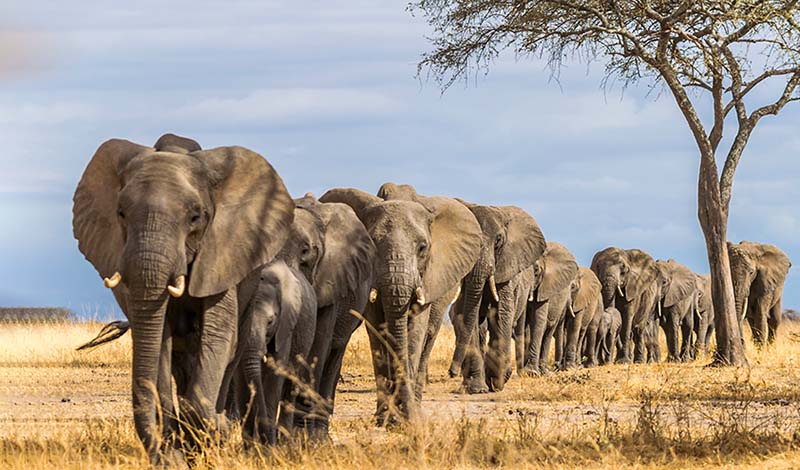3-minute read
Some of our most beautifully poetic expressions of feeling are those drawn from the language of nature. Throughout history, flowers and plants have been used to signify deep and enduring connections to a specific culture, place, or time and as a lyrical means of communicating the nuance of human emotion and remembrance. The symbolic meaning of flowers that evolved into the coded language of floriography was rooted in the traditional customs, folklore, and religious belief systems of Europe, Asia, and the Middle East. Following the publication of the first detailed floriography reference book in 1819, La Langage des Fleurs, dictionaries assigning sentiments to individual plants and flowers became increasingly popular in Western culture.
During the Victorian era (1837-1901) in the United States, France, and England, when public expression of emotion was culturally suppressed and in some cases forbidden, communicating private feelings through the secret language of flowers was readily embraced by the seriously smitten as well as the lovelorn. Flowers carefully chosen from floriography dictionaries to subtly convey heartfelt words that could not be spoken were arranged into bouquets and presented as gifts. A bouquet received from an ardent admirer and held at heart level signaled glad acceptance. Holding a floral gift upside down was a silent, but undoubtedly no less painful indication of a message received—and rejected. Floriography dictionaries could also serve as handy reference guides for those motivated to crankily communicate through a bouquet of bad feelings symbolizing negative sentiments such as disdain, disappointment, fickleness, or the all-encompassing heartlessness.
Expressing emotion through floral gift-giving is as popular in 2020 as it was in the Victorian era, and now thanks to the work of researchers in Sunnyvale, California, floriography is getting an artificial intelligence upgrade. Because one flower may have multiple meanings and multiple flowers may have the same meaning, to help ensure no important sentiment is lost in translation, believe it or not, a machine-learning algorithm has been developed to help express your flowery feelings with science-based, petal-point accuracy. To spare you the trouble of searching through an A-Z directory, emotive words and phrases that you would like to communicate to your bouquet recipient are mapped against a compendium of all possible flower meanings drawn from multiple dictionaries. Those blooms best expressing your particular level of besottedness are then rank-ordered for inclusion in the ultimate neural-network-optimized-and-designed floral arrangement. Build a better bouquet and they will come!
If you are currently preoccupied with conjuring the most meaningful way to communicate your tender feelings towards the highly esteemed object of your affection and can’t wait until there’s an official AI app for that, here’s an old-school crash course on decoding the floriferous language of love. By the way, if you thought roses were the definitive symbol of adoration, you may be surprised to learn that a bouquet of pineapples*, while a bit unwieldy, could be equally swoon-worthy, not to mention salad-worthy and certainly more memorable. Just be sure to include a translation—and a fork.
African violet • Such worth is rare
Alison • Worth beyond beauty
Calla Lily • Beauty
Camellia, red • You’re a flame in my heart
Carnation, pink • I’ll never forget you
Clematis • Soul mates, mental beauty
Chrysanthemum, red • I love you
Common lilac • Reminder of young love
Dahlia • Elegance and dignity
Daisy • Innocence and hope
Forget-me-not • True love memories
Gladiolus • Strength of character, moral integrity
Globe amaranth • Endless love
Heliotrope • Eternal love and devotion
Honeysuckle • Bonds of love
Hyacinth, white • Loveliness
Lavender • Constancy and devotion
Lily of the valley • Sweetness and purity
Mimosa • Elegance, sensitiveness, endurance of the soul
Orchids • Love and beauty
Peony • Bravery, beauty, honor
Peruvian Lily • Powerful bond
Phlox • United hearts and souls
*Pineapple • You are perfect
Ranunculus • You are radiant with charm
Rose, red • I love you
Rose, white • I’m worthy of you
Spiderflower • Elope with me
Strawberry tree • You are the only one I love
Sunflower • Adoration
Tickseed • Love at first sight
Tulip, red • Declaration of love
Wild pansy • You occupy my thoughts
And if you’d like to present your best ever, most-favorite favorite person with a living symbol of everlasting, not to mention carbon-storing love, you may want to consider a sampler of saplings. Plus, there’s a song for that.
Apple tree • Love, healing, immortality
Apricot tree • Love
Linden tree • Protection, good luck, love
Oak tree • Character, courage
Olive tree • Peace, healing, protection
Peach tree • Generosity, hope, love
Pine tree • Peace, harmony
Plum tree • Healing, beauty, longevity
Willow tree • Love, protection, health
For a beautifully illustrated excursion through the definitive history of the language and folklore of flowers, check out The Complete Language of Flowers, by S. Theresa Dietz.
Whether you’re all about AI or more into old school, a flower plucker or a tree planter, wishing you a joyful heart on St. Valentine’s Day and all of the days after that.





































































